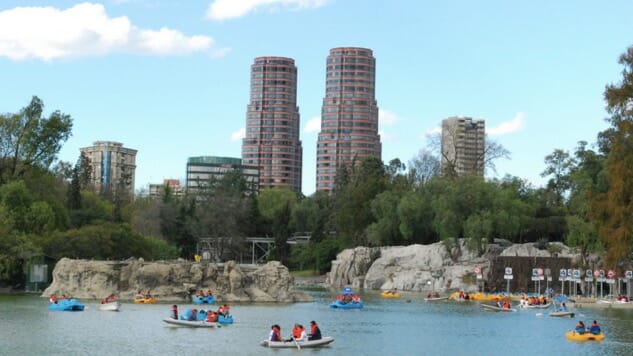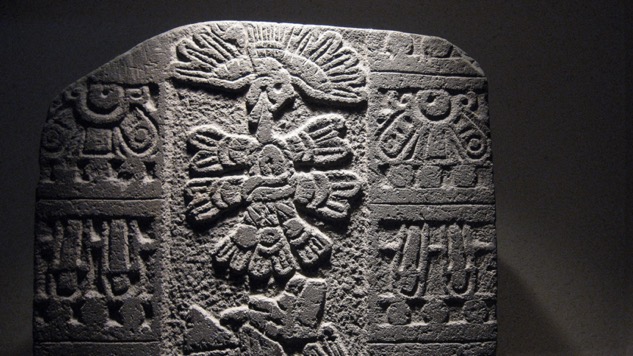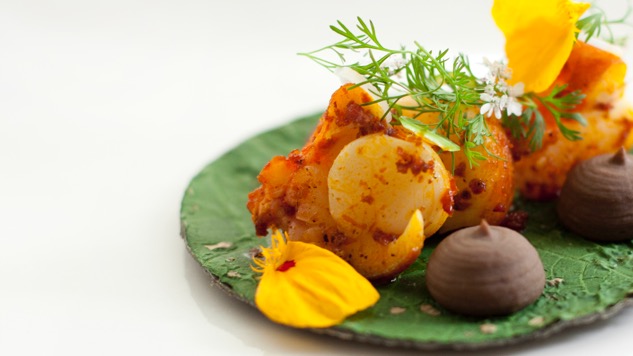
Tenochtitlan, the capital of the Aztec Empire and the largest pre-Columbian city in the Americas, sat on an island in Lake Texcoco surrounded by three mountains. In the early 1500s, the Spanish conquistadors battled the Aztec and conducted a bitter 75-day siege in 1521 to conquer the city. The high-altitude Aztec capital, which lost numerous structures in the fight, was soon rebuilt as the capital of New Spain, eventually draining the lake and adopting the name Ciudad de México (CDMX). Today, Mexico City, the most important capital in Spanish-speaking Latin America, is one of the world’s largest metropolises with 16 boroughs and more than 300 colonias (neighborhoods).
For travelers interested in colonial history and architecture, the city center overflows with cathedrals, buildings, squares and even live Mariachi music. To experience modern Mexican culture, however, head west to the more exclusive neighborhoods like Polanco, a cluster of five posh colonias with the country’s highest concentration of politicians, business leaders, embassies, celebrities, five-star hotels and wealthy families. Sitting just north of Chapultepec Park, Polanco usurped Zona Rosa as the city’s trendsetting hub after a massive earthquake in 1985 brought an influx of new residents and commercial businesses. Whereas the city center claims centuries-old colonial buildings, Polcano has modern architecture that epitomizes the neighborhood’s push toward the future, while its roadways honor forward-thinking minds with street names like Edgar Allen Poe, Galileo, Newton and Oscar Wilde. For sophisticated travelers, Polcano is an ideal neighborhood bustling with Michelin-level restaurants, rooftop bars, leafy parks and enhanced security that makes for significantly safer streets.
Day One
Morning
Start the day with an artisanal muffin, donut or croissant at Da Silva Panaderia, a prominent bakery with an elegant Polanco location. From Da Silva, head south to the city’s largest park, Chapultepec, covering nearly 1,700 acres. Often compared to New York City’s Central Park, this lush urban oasis—whose name roughly translates “grasshopper hill” in the Aztec language Nahuatl—deserves at least half a day on its own. Start by exploring the forests, lakes and fountains in the center (section two) before the crowds swell, which they always do. The tree-packed park, a former retreat for Aztec rulers, serves as the city’s lungs replenishing oxygen to the otherwise smoggy valley. Optional stops in section two include La Feria Chapultepec Mágico amusement park, several museums and Lago Mayor lake with its oversized Monumental Fountain. El Papalote is a popular museum with children, while the future-focused CFE Technology Museum contains a planetarium. The park is filled with street food vendors, but for a truly picturesque lunch, head to the south side of the park for Del Bosque restaurant directly on the waters of Lago Menor.

National Museum of Anthropology Photo: 16:9clue, CC-BY
Afternoon
After lunch, make your way east to the Monument of Young Heroes near the park’s main entrance in section one. The monument, built in 1952, honors six young cadets who died in 1847 after refusing to surrender to U.S. troops at a battle in the park. From the Monument, follow the road up Chapultepec Hill to the former imperial palace, Chapultepec Castle, which now houses the National History Museum. Outside the castle, panoramic views await, while the museum inside hosts a historic overview of the city from the Spanish conquest through the 20th century. Descending the hill, travelers have to prioritize what they want to see next. This section of Chapultepec has a zoo, botanical gardens and several more museums. The Modern Art Museum is the traditional choice, but the National Museum of Anthropology is the more interesting choice with a world-class collection of archaeological finds and an Instagram-feeding umbrella-roof courtyard. In a clearing outside the museum, Anthropology also hosts daily performances of the Rite of the Voladores in which traditionally dressed individuals “fly” from a top a 20-meter pole as part of an ancient Veracruz-based ritual. After exploring section one, head back to the hotel to get cleaned up for Polanco’s ritzy restaurant scene and nightlife.
Evening
Nighttime in Polanco is all about dinner and drinks, but landing a table at famed restaurant Pujol typically requires a reservation made more than a month in advance. Chef Enrique Olvera is the leader in Mexican gastronomy exploring flavors and dishes from pre-Columbian times forward. The tasting menu-only dinner can include baby corn with powdered ants, suckling pig tacos, jerky tartar and its famous Mole Madre, Mole Nuevo in which two-year-aged mole surrounds a young mole for complexity and contrast. The dinner costs 1,495 pesos (at 17.2 pesos to the dollar, as of January 2016). Spirit enthusiasts should also splurge 580 pesos for a glass of 25-year-aged Tepextate mezcal made from a rare and wild type of agave.

Pujol Photo: Adam Goldberg
Pujol is the most famous restaurant in the country, which means reservations can be an issue, so the backup option is the Spanish Basque-style restaurant Biko with traditional and modern dishes, the latter crafted by an elBulli vet. Skip the tasting menu at Biko for a la carte options, but don’t skip the impressive collection of mezcals, which the server will likely let you sample by pouring a few drops in the palm of your hand. (Reservations for all the top restaurants are available via OpenTable.) After dinner, head to Hotel Habita and take the elevator up to AREA, a hip rooftop bar overlooking the city from the 6th floor. AREA features an outdoor fireplace and often projects movies onto the side of a neighboring building.

Day Two
Morning
Start your day with either hot chocolate and chilaquiles at El Cardenal or a full breakfast at upscale Saks Polanco, and consider one of two morning options. Active-minded travelers should head to Museo Soumaya Polanco for the spectacular art collection of billionaire businessman Carlos Slim, whom Forbes ranked the second-richest man in the world (behind Bill Gates) in 2015. In 2011, the “Warren Buffet of Mexico” debuted the new 150-foot-high compound whose exterior reflects sunlight with 16,000 hexagonal aluminum plates. The museum, named after Slim’s late wife, houses nearly 70,000 pieces by the likes of Renoir, Picasso, Van Gogh, Monet and Dalí. For a more relaxing morning, however, visit one of CDMX’s premiere spas at the W, Habita, JW Marriott and other top hotels, many of which boast breathtaking city views. Services can include coffee-, seaweed- and milk-based treatments like a centuries-old Mexican bath ritual at the W and an Aztec-themed facial at the 15th-floor Remède Spa in the Polanco-adjacent St. Regis. For budget-conscious travelers, check out Desértika Spa, which offers hour-long massages for less than $40.
Afternoon
Start the afternoon with lunch at Dulce Patria, easily the most colorful and fanciful restaurant in CDMX. Chef Martha Ortiz, daughter of famed painter Martha Chapa, designed a fairytale-like setting with cactus sculptures, a grand spiral staircase and indulgent swaths of pink. The food is equally colorful and innovative in its creation, presentation and plating. For example, dishes can include tropical ceviche with citrus sorbet, grilled red and green tomatoes with cheese and grasshoppers, beef fillet with potato parchment paper and cheesecake shaped like a mariachi guitar. In some instances, the dishes hide behind mysterious names like Vampire Ceviche, The Fairest Fair of All and Maria Goes to the Flower Shop.
After lunch, take advantage of Polanco’s world-class shopping on Avenida Presidente Masaryk, a street named after the first president of Czechoslovakia. Polanco’s famed retail street is commonly referred to as Mexico’s 5th Avenue (NYC), Rodeo Drive (Beverly Hills), Avenue des Champs-Élysées (Paris) or Bond Street (London)—comparisons likely thought up in tourism marketing meetings—with designer stores like Louis Vuitton, Cartier, Chanel, Gucci, Escada, Hugo Boss, Salvatore Ferragamo, Tiffany & Co., Marc Jacobs and others. Designer fashions often cost more here than in the U.S., so opt instead for national shops like Tane, a 1940s leather handbag brand that became Mexico’s top silversmith. Other top shops include Pineda Covalin for colorful scarves, Pirwi for cutting-edge home furnishings, the Museum Store for art books and handicrafts, Piel Canela for leather goods, Marché Dumas for gourmet food items, Bi Yuu for handmade Oaxaca rugs, Que Bo! for artisanal chocolates and Galeria Sergio Bustamante for sculptures, paper mache and jewelry by the acclaimed Mexican artist.

Polanco skyline Photo: Matthew Rutledge, CC-BY
Evening
Pujol is the most famous culinary experience in Mexico City, but the current critics’ darling is nearby Quintonil. Chef Jorge Vallejo, who trained under chefs René Redzepi (Noma) and Enrique Olvera (Pujol), sources many ingredients from the restaurant’s own urban garden 100 feet away. The 10-course tasting menu, which cost 1,100 pesos (or about $64) as of January 2016, is the way to go with dishes like smoked crab tostada, glazed mushrooms with ant eggs and cactus sorbet, though equally tempting a la carte items include string cheese soup with fried pork belly. Quintonil currently leads all Mexican restaurants on Latin America’s 50 Best Restaurants list for 2015 at No. 6. After the three-hour tasting, enjoy after-dinner drinks and DJ spins at the posh Living Room Bar at the W Hotel.
![]()
Getting There
Benito Juárez International Airport (MEX) receives flights from around the world with direct connects from Los Angeles, New York City, London, Paris, Toronto, Dallas, Chicago and countless other cities. After clearing immigration, car services fill a long row of booths that compete for your business. To save money, head to the taxi stand outside where prices are based on location. As of November 2015, the taxi rate to Polanco was 279 pesos.
Getting Around
Most people can complete the suggested itinerary on foot, but the Uber app likely on your smartphone already works in CDMX. Put your phone in airplane mode to avoid roaming charges and utilize the hotel wifi to summon cars, which are cheaper than Uber rides in the U.S. and safer than Mexican street taxis. Free WiFi is available in many parts of the city (look for the lime-green signs that say Zona WiFi), including sections of Chapultepec Park, for those needing a pickup away from a hotel. Most businesses are also happy to call a registered taxi on your behalf.
To Stay
Accommodations in Polanco include top brands like the W, InterContinental and Four Seasons, but consider a boutique hotel instead. Habita Hotel mentioned for its spa and rooftop bar—is an excellent choice on Avenida Presidente Masaryk. Built in 2000, Habita helped pioneer the sleek boutique scene in Polanco, and its fifth-floor pool offers gorgeous city views. Room rates typically start at $200 a night.
Another boutique hotel, Las Alcobas, has only 35 rooms, and each one is exquisitely designed with custom rosewood furniture, walk-in closets, Italian linens by Rivolta Carmignani and all-marble bathrooms with a rain shower and whirlpool tub. The hotel itself includes a deluxe spa, traditional Mexican art and the aforementioned Dulce Patria restaurant. Room rates start at start $279.
Top photo: Ari Helminen, CC-BY
David Jenison is a Los Angeles native and the Content Editor of PROHBTD. He has covered entertainment, restaurants and travel for more than 20 years.